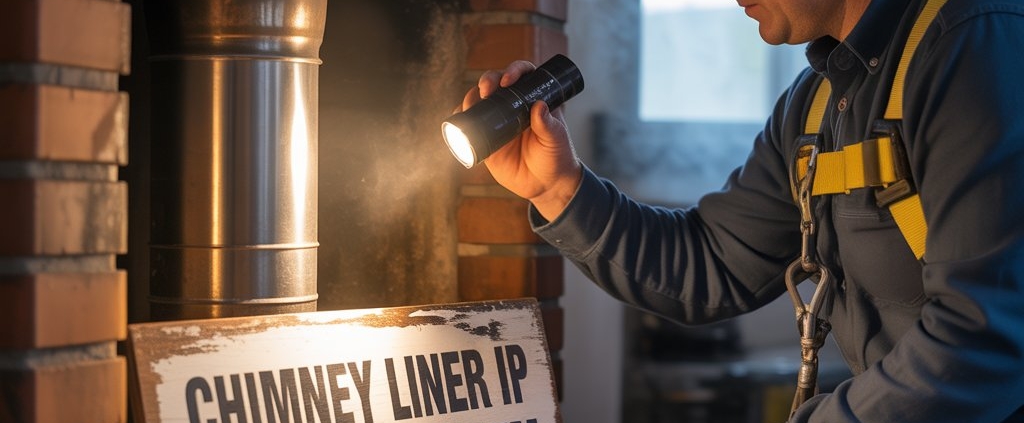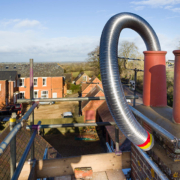Fall Fireplace Preparation: Winston Salem Chimney Liner Advice
As the first cool breeze blows through Winston Salem, it’s a sign that warm nights by the fireplace are just on the horizon. There’s something that never goes out of style about the crackle of a fire and the heat it distributes to your home—but before lighting that initial log, there is one thing you shouldn’t overlook: chimney maintenance. Whether you’ve been a homeowner for years or just recently moved into your new home, preparing your chimney for fall is more than a seasonal task. It’s maintaining your home’s safety, efficiency, and warmth. And at the center of that preparation? Your Chimney Liner.
What Exactly Is a Chimney Liner—and Why Should You Care?
If you’re not familiar with the term, a chimney liner is basically a protective tube that lines the inside of your chimney. It helps guide smoke and gases safely up and out of your house. But its job doesn’t stop there—it also protects your chimney walls from excessive heat and corrosion and keeps combustible materials from catching fire. In Winston Salem, most of the older homes have masonry chimneys. Liners are important in those places. Whether clay, metal, or cast-in-place, the liner absorbs the heat of the chimney. Damaged or missing liners make your fireplace a real safety hazard.
Indications Your Chimney Liner Needs Work
Just as your car requires oil changes and your HVAC system requires a filter change, your chimney liner requires occasional inspections. These are some warning signs it may be time to inspect or replace it:
- Cracked tiles or crumbling mortar
- Smoke seeping back into your living area
- Burning odor when the fireplace is not in use
- Water damage to the area around the chimney
- Flakes or debris in your firebox (also referred to as creosote)
And remember, just because all seems right on the outside doesn’t mean everything is. Chimney liners break down slowly over time—particularly after a lot of use or exposure to Winston Salem’s yearly fluctuations.
Quick Comparison Table: Chimney Liner Options
| Liner Type | Lifespan | Cost Range | Best For |
| Clay Tile | 30–50 years | $2,000 – $4,000 | Older homes with masonry chimneys |
| Stainless Steel | 15–25 years | $1,500 – $3,500 | Wood stoves, pellet stoves |
| Cast-In-Place | 40–50 years | $2,000 – $5,000+ | Unusual chimney shapes |
Safety First: Don’t Cut Corners on Chimney Liner Work
Let’s be real for a minute. Chimney liner repairs or replacements aren’t exactly cheap—but skipping them can be far more costly. An unlined or damaged chimney is a fire waiting to happen. It can allow toxic gases like carbon monoxide to leak into your home or let flames reach wood framing hidden behind your walls. One small crack could lead to a massive issue. As per fire safety experts, correctly installed liners lower the chance of chimney fires significantly. So, whereas it might look like a frustrating fall cost, it’s truly one of the finest investments you can make for your home and your loved ones’ safety.
“A Clean Chimney is a Safe Chimney”
One Winston Salem homeowner summed it up: “We thought the fireplace was okay until our sweep opened our eyes to how badly the liner had broken down. I was amazed. Now we have it inspected every fall automatically.” It’s that sort of thinking ahead that prevents small problems from becoming house-wrecking ones.
The Cost Side of the Equation
Yes, chimney liner repairs are expensive. But let’s consider it another way: a new liner could cost you $2,000–$3,500, depending on your chimney and what you use. A house fire from a failing chimney? That could set you back everything. And also, a good liner makes your stove or fireplace burn more efficiently, saving you money on heating bills down the road. Most Winston Salem companies even provide financing options or discounts seasonally if you reserve early in the fall. Don’t wait until November when everyone else is fighting to get onto the schedule.
FAQs About Chimney Liners in Winston Salem
Q: How frequently should I have my chimney liner inspected?
A: At least once per year, preferably before fall. More frequently if you use your fireplace frequently.
Q: Can I do the chimney liner installation myself?
A: Yes, technically—but don’t. Leaks, clogs, even fires can result from improper installation. Have a certified professional do it.
Q: Is stainless steel superior to clay?
A: It all depends on your configuration. Stainless steel is perfect for wood stoves and pellet stoves, whereas clay is wonderful for conventional masonry chimneys—but more difficult to fix.
Q: What does a Winston Salem chimney liner average cost?
A: Plan on spending between $1,500 and $4,000, based on the size, shape, and material you select for the liner.
Q: What is an LSI keyword for “Chimney Liner”?
A: Consider words like “fireplace flue lining,” “chimney pipe,” or “chimney insulation”—these organically assist with SEO without being annoyingly repetitive.
Don’t Wait Until It’s Freezing
The ideal time to address chimney problems? Before you require your fireplace. The earlier you check and fix any liner issues, the happier your fall and winter will be. It’s cozy, secure, and budget-friendly to prepare in advance. In Winston Salem, fall is your cue. Before Thanksgiving arrives, your fireplace should be guest-ready, not gas leaks or fire hazards. If it’s been a while since you’ve had your liner inspected, now is the time to schedule that appointment.
Last Thoughts: Fall is for Fires—Not Repairs
Preparing your fireplace for autumn doesn’t have to be daunting. A simple check-up, a bit of maintenance, and, if required, a replacement chimney liner will get you through the season in safety, comfort, and calm. Don’t ignore smoke signals or off odors—listen to your instincts, call a professional, and have your fireplace the way it should be: warm, secure, and worry-free.
Read More: Chimney Sweep Winston Salem












Leave a Reply
Want to join the discussion?Feel free to contribute!